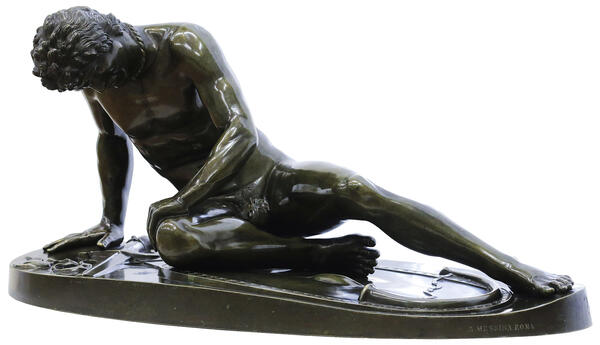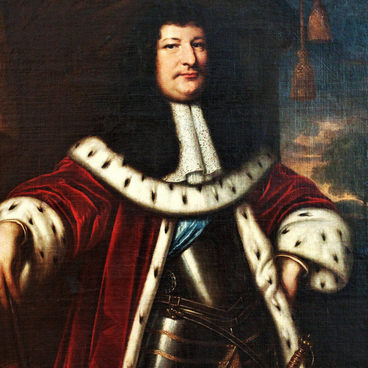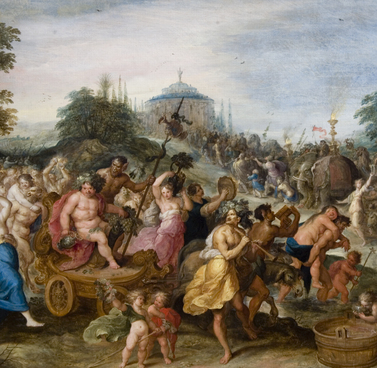‘The Dying Gaul’ statue is a reduced bronze copy of the 19th century. It came to the collection of the Tula Museum of Fine Arts from Red Buytsy, the estate of Olsufiev.
The marble Roman replica (230-220 BC) was created from an even earlier, probably bronze, Greek original and is preserved in the Capitoline Museums of Rome. The warrior figure most likely formed part of a large sculptural composition for Temple of Athena Polias in Pergamum and symbolically embodied the victory of Attalus I, king of Pergamon, over the Galatians, Celtic tribes. It is assumed that the Roman copy was created by the court sculptor Epigonus. This work reaches the top of ancient art for its naturalism and dramatism.
‘The Dying Gaul’ statue depicts a mortally wounded Celtic warrior falling on a shield next to a sword and a battle horn, the sound of which was used as a signal. In the last minutes of life, the warrior’s face is distorted by pain; he is mortally wounded in the chest — a bleeding puncture of the sword is visible to the right.
The Gaul with a shield involuntarily refers us to the phrase ‘With a shield or on a shield.’ It appeared in ancient Sparta and marked the call to defeat the enemy or die in battle with glory.
The marble Roman replica (230-220 BC) was created from an even earlier, probably bronze, Greek original and is preserved in the Capitoline Museums of Rome. The warrior figure most likely formed part of a large sculptural composition for Temple of Athena Polias in Pergamum and symbolically embodied the victory of Attalus I, king of Pergamon, over the Galatians, Celtic tribes. It is assumed that the Roman copy was created by the court sculptor Epigonus. This work reaches the top of ancient art for its naturalism and dramatism.
‘The Dying Gaul’ statue depicts a mortally wounded Celtic warrior falling on a shield next to a sword and a battle horn, the sound of which was used as a signal. In the last minutes of life, the warrior’s face is distorted by pain; he is mortally wounded in the chest — a bleeding puncture of the sword is visible to the right.
In this work, the ethnic type of gall is perfectly conveyed. The hair of the hero is thick and stiff — the Gauls lubricated them with a solution of lime, and the body is athletic but tempered not by gymnastics but combat campaigns. The warrior’s neck is decorated with torque (from the word ‘tork’ — twist) — a sacred decoration. Itэs a kind of Celtic torc: a cult necklace of bronze, gold, precious metals worn around the neck, waist, across the chest, or like bracelets. Torque was considered an amulet and a badge of distinction. Without it, the warriors did not enter the battlefield.
‘Dying Gaul’ symbolizes the defeated enemy. Still, the master created a heroic image of a warrior full of courage, suffering, consciousness of inevitable death; he tries to hold on to his last breath and remains proud even in the minutes of fading.
‘Dying Gaul’ symbolizes the defeated enemy. Still, the master created a heroic image of a warrior full of courage, suffering, consciousness of inevitable death; he tries to hold on to his last breath and remains proud even in the minutes of fading.
The Gaul with a shield involuntarily refers us to the phrase ‘With a shield or on a shield.’ It appeared in ancient Sparta and marked the call to defeat the enemy or die in battle with glory.



